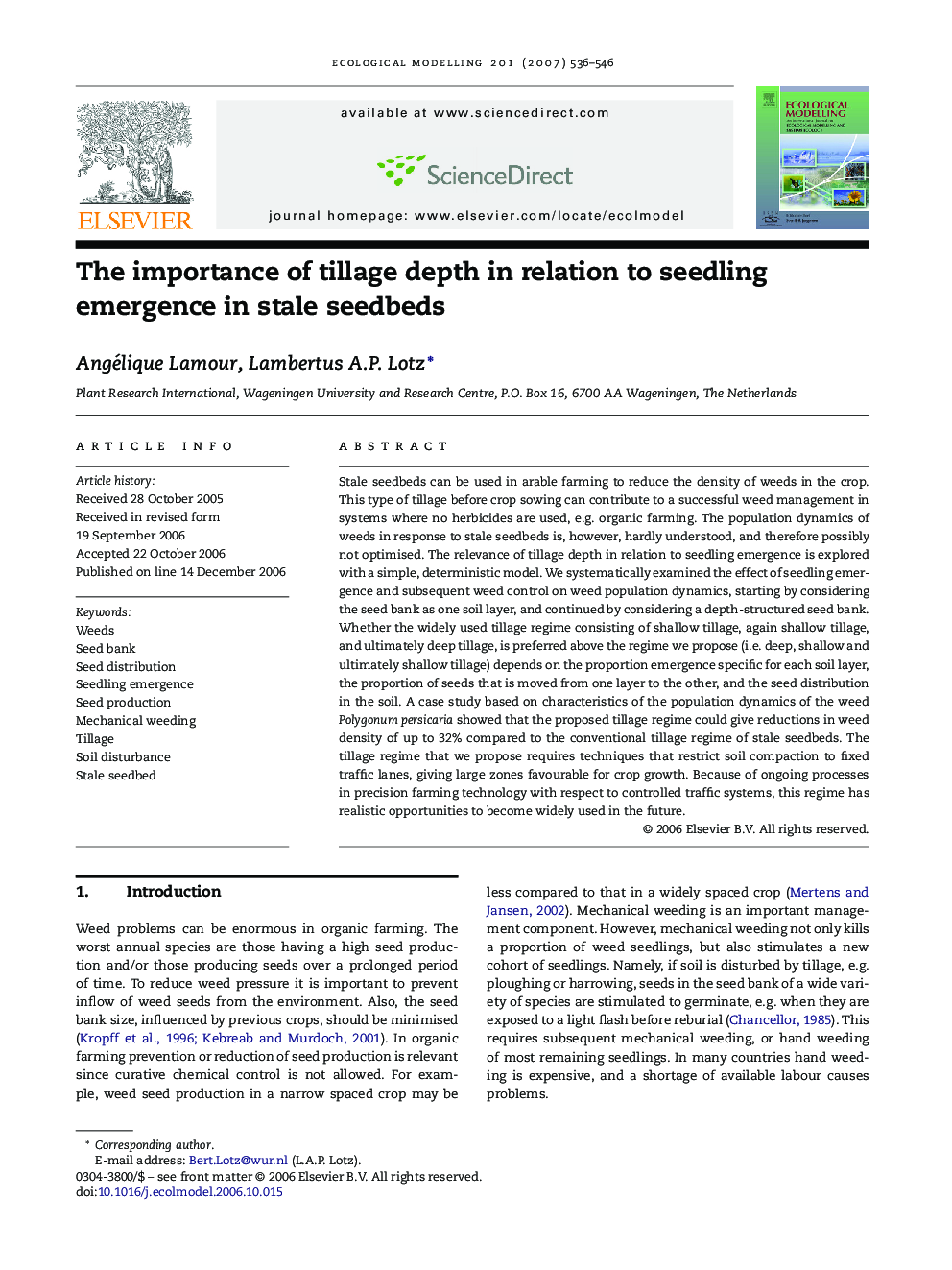| Article ID | Journal | Published Year | Pages | File Type |
|---|---|---|---|---|
| 4378506 | Ecological Modelling | 2007 | 11 Pages |
Stale seedbeds can be used in arable farming to reduce the density of weeds in the crop. This type of tillage before crop sowing can contribute to a successful weed management in systems where no herbicides are used, e.g. organic farming. The population dynamics of weeds in response to stale seedbeds is, however, hardly understood, and therefore possibly not optimised. The relevance of tillage depth in relation to seedling emergence is explored with a simple, deterministic model. We systematically examined the effect of seedling emergence and subsequent weed control on weed population dynamics, starting by considering the seed bank as one soil layer, and continued by considering a depth-structured seed bank. Whether the widely used tillage regime consisting of shallow tillage, again shallow tillage, and ultimately deep tillage, is preferred above the regime we propose (i.e. deep, shallow and ultimately shallow tillage) depends on the proportion emergence specific for each soil layer, the proportion of seeds that is moved from one layer to the other, and the seed distribution in the soil. A case study based on characteristics of the population dynamics of the weed Polygonum persicaria showed that the proposed tillage regime could give reductions in weed density of up to 32% compared to the conventional tillage regime of stale seedbeds. The tillage regime that we propose requires techniques that restrict soil compaction to fixed traffic lanes, giving large zones favourable for crop growth. Because of ongoing processes in precision farming technology with respect to controlled traffic systems, this regime has realistic opportunities to become widely used in the future.
